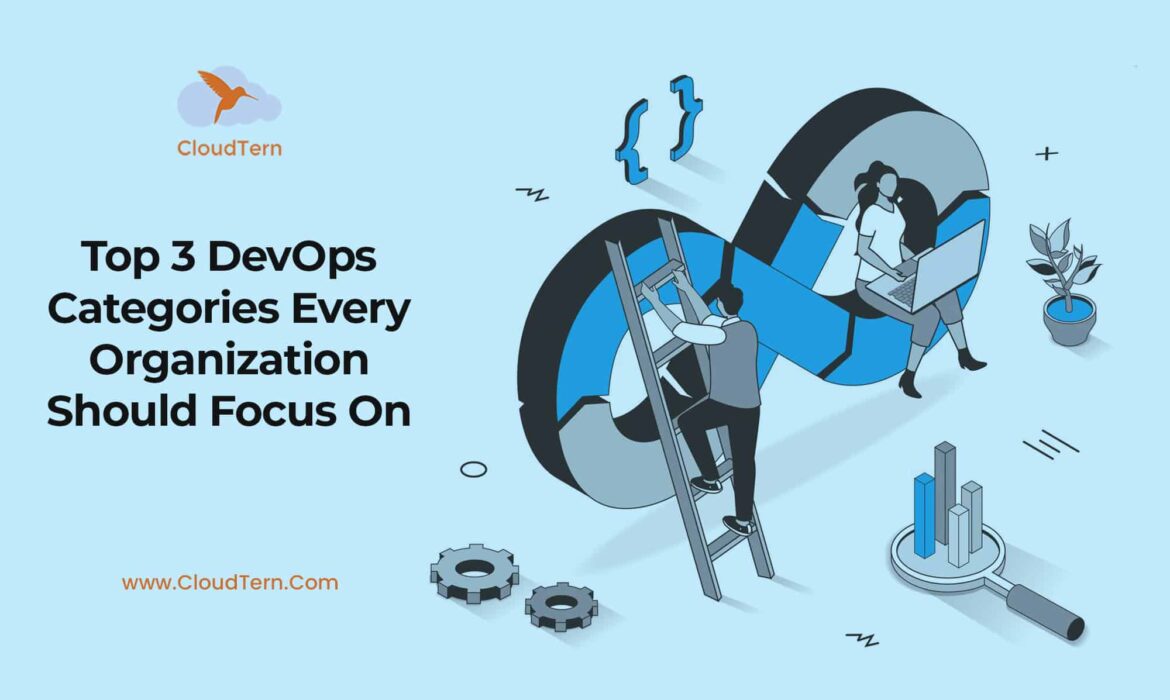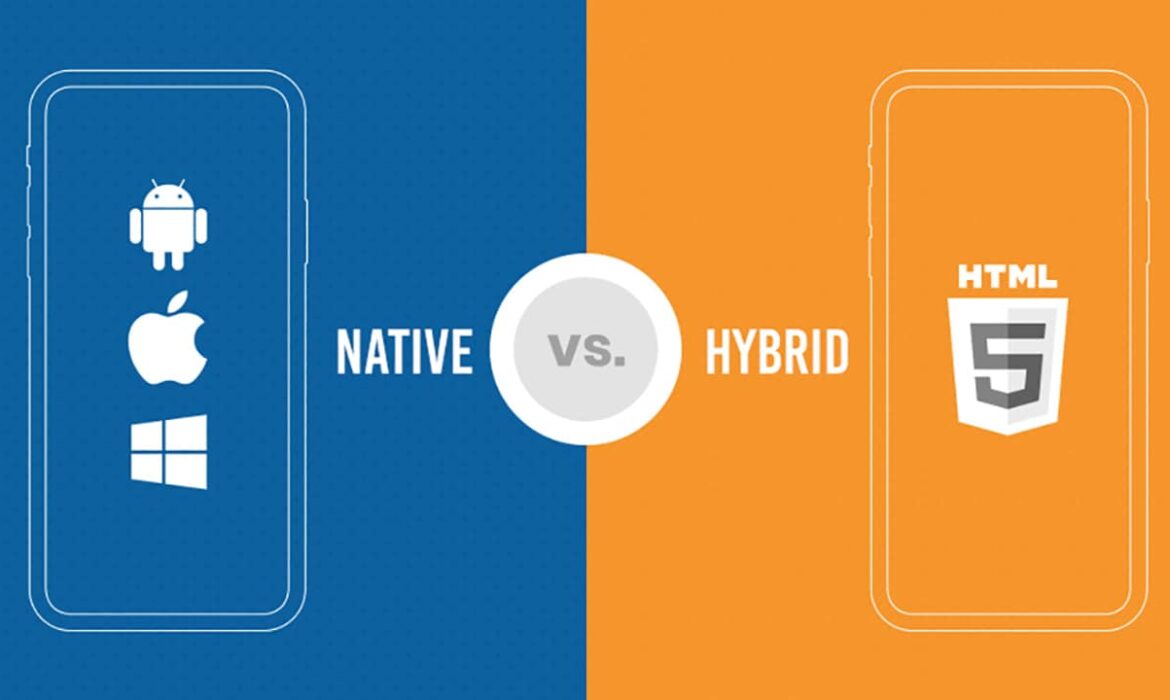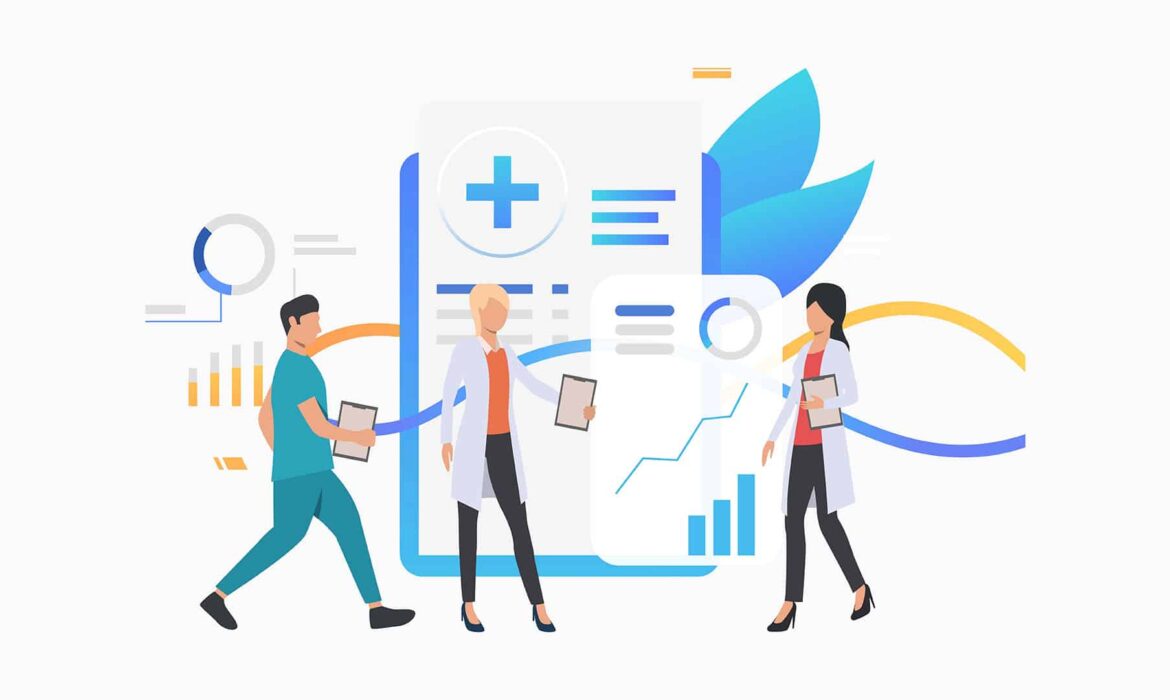Exploring GenAI Applications Across Diverse Industries
Granting a technological edge, GenAI stands out as it furnishes a comprehensive 360-degree approach, a capability beyond the sequential nature of the human brain’s consideration of one possibility at a time. Traversing varied terrains, this narrative explores the transformative capacities of Gen AI, reshaping content creation, problem-solving, and beyond. Embark on a journey across the domains like healthcare, finance, and creativity, delving into the narrative intricacies that paint Gen AI as a pivotal force. Observe as it unravels unparalleled advantages, molding industries worldwide and redefining the core of progress in this era of technological evolution. The narrative invites you to witness firsthand the influence of Gen AI, a dynamic catalyst that propels innovation and fundamentally alters the landscape of diverse industries on a global scale.
Why Gen? Why is everyone curious about it?
Gen, short for generative, has captivated interest due to its revolutionary capabilities in AI (artificial intelligence). It leverages advanced models like GPT-3, GPT-4 to generate content, from text to images, with human-like quality. Gen’s versatility has sparked curiosity across various industries, showcasing potential applications in creative writing, content creation, and even solving complex problems. Its ability to understand and produce contextually relevant outputs sets it apart, fueling the curiosity of researchers, developers, and businesses eager to explore the vast possibilities it offers in reshaping how we interact with and leverage AI.
GenAI is a catalyst?
Gen AI serves as a catalyst for innovation by revolutionizing creative processes and problem-solving. Its generative capabilities, powered by advanced models like GPT-3, GPT-4, enable the creation of diverse content, sparking novel ideas and solutions. From generating imaginative text to crafting unique designs, Gen AI fosters creativity and facilitates rapid prototyping. Its adaptability and potential applications across industries make it a driving force for innovation, inspiring researchers, developers, and businesses to explore new frontiers and redefine the possibilities of artificial intelligence in enhancing productivity and creativity.
Upon deeper exploration of the realm of Gen, it became clear that its applications were boundless, stretching as far as the imagination could reach. Whether in healthcare, finance, manufacturing, or marketing, Gen was rewriting the rules of the game. Let’s delve into the key benefits that Gen brings to AI across diverse industries.
Inputs and Outputs of Business with Gen
In the business landscape, incorporating Gen into AI strategies is like unlocking a treasure trove of opportunities. The essential inputs—data, talent, and strategic vision—serve as the catalysts for innovation. As businesses harness Gen to analyze, predict, and optimize, the tangible outcomes include increased efficiency, improved products and services, and ultimately, satisfied customers. Collaboration and continuous learning stand as foundational pillars supporting sustained success in this journey. Amid the dynamic AI terrain, partnerships with Generative AI experts, investments in employee training, and a commitment to ethical AI practices become imperative. This positive business outlook resonates with optimism and a proactive readiness to embrace the future. With Gen as a strategic ally, businesses are not just adapting to change; they are driving it at its best.
GenAI in Telecommunications
Within the telecommunications industry, Gen AI employs machine learning to identify and protect sensitive customer data. By replacing such data with artificial information, this innovative strategy not only elevates the quality of responses but also ensures a heightened level of confidentiality. This advanced approach showcases Gen AI’s pivotal role in addressing privacy concerns, fostering secure interactions, and contributing to the overall improvement of data protection measures within the dynamic landscape of the telecommunications sector.
Generative AI adoption by telecom companies is a catalyst for operational revolution, innovation stimulation, network optimization, and improved customer experiences. Gen AI’s transformative impact not only safeguards data but also drives advancements in service offerings and operational efficiency. This positions it as a pivotal technology reshaping the telecommunications industry with its profound and adaptive capabilities, signaling a paradigm shift in how companies manage and enhance their services in response to evolving technological landscapes.
GenAI in Healthcare
In the healthcare sector, Gen AI offers transformative advantages by enhancing diagnostic accuracy, accelerating drug discovery, and personalizing treatment plans. Its ability to analyze vast datasets enables more precise disease predictions and tailors therapeutic approaches. Gen AI facilitates natural language processing, improving patient-doctor interactions and automating administrative tasks. Additionally, it aids in generating medical content, fostering continuous education for healthcare professionals. With its generative prowess, Gen AI becomes an invaluable ally, fostering innovation, efficiency, and improved patient outcomes, ultimately revolutionizing the healthcare business by integrating cutting-edge technology into diagnosis, treatment, and overall healthcare management.
GenAI stands as a transformative force in healthcare, utilizing large language models (LLMs) and deep learning algorithms to empower providers. Its innovative approach assures significant strides in diagnostic accuracy, efficiently identifying medical conditions. The tool streamlines record-keeping, enhancing data management for streamlined operations. GenAI goes beyond, fostering improved patient engagement through personalized care and enhanced communication. Positioned as a pivotal solution, it revolutionizes healthcare practices by harnessing advanced algorithms. The result is a promising pathway to heightened accuracy in diagnostics, more efficient operations, and an elevated standard of patient experiences, marking a paradigm shift in the way healthcare is delivered and experienced.
GenAI in Finance and Banking
Gen has revolutionized the financial sector by leveraging advanced predictive analytics, fundamentally altering the landscape. Through sophisticated algorithms, it enables financial institutions to forecast market trends with unprecedented accuracy, facilitating optimal investment portfolio management. The transformative impact extends to fortifying fraud detection mechanisms, enhancing security for businesses and consumers alike. This breakthrough not only safeguards against potential risks but also establishes a more resilient and trustworthy financial environment. Gen’s role in refining risk management underscores its pivotal contribution to the industry, solidifying its status as a game-changer that goes beyond predictions to actively shape a secure and efficient financial landscape.
Banks equipped with the trifecta of strategy, talent, and technology stand poised for transformative change through GenAI. Recent research by EY-Parthenon indicates that while banks recognize the transformative potential of GenAI, their initial focus lies in prioritizing back-office automation. This strategic approach aligns with leveraging GenAI to enhance operational efficiency and streamline processes, laying the foundation for broader future business model reimagining. As financial institutions strategically deploy GenAI, the landscape of banking operations undergoes a gradual yet impactful evolution, unlocking new possibilities for efficiency, innovation, and long-term business model transformation.
GenAI in Manufacturing
Gen AI is pivotal in manufacturing, employing machine learning to optimize production, predict maintenance, and improve efficiency. Offering predictive quality control, it minimizes defects and ensures product consistency. Gen AI’s adaptive algorithms analyze extensive datasets, aiding in demand forecasting and inventory management. Through autonomous decision-making and process optimization, it streamlines operations, reduces downtime, and enhances productivity. This transformative technology integrates intelligence, fostering innovation and maintaining competitiveness for companies in the swiftly evolving manufacturing landscape.
Also in manufacturing, Gen AI has introduced smart automation, optimizing production processes and enhancing operational efficiency. Quality control reaches new levels of precision, as Gen’s algorithms meticulously identify defects, minimize errors, and maximize output. Yet, it’s essential to recognize that while Generative AI excels in content creation, it may introduce inaccuracies or generate biased and contextually inappropriate content. This poses risks of misinformed marketing decisions and, more critically, potential damage to a brand’s image in the eyes of consumers. Striking a balance between innovation and accuracy is key in leveraging Gen AI for smart automation and quality control in manufacturing.
In every sector, from healthcare and education to finance and manufacturing, Gen has spurred transformative change. Its impact goes beyond efficiency gains, embracing key business objectives like innovation, growth, and customer satisfaction. In today’s data-driven and technologically advanced landscape, incorporating Gen into AI is not just an option; it’s a strategic imperative. Businesses leveraging Gen’s capabilities are positioned to chart the course into a future filled with limitless opportunities, signifying a crucial era of progress and advancement on the horizon.
Vector Databases: The Top 3 Choices
The Vector database is a standout, high-performance, and scalable storage solution designed for real-time management and retrieval of extensive data volumes. It specializes in handling vectors, arrays, and embeddings crucial for machine learning and analytics, with architecture supporting swift indexing and similarity searches—essential for recommendation systems and image recognition. The optimized vector operations and storage capabilities enable the Vector database to excel in managing intricate, high-dimensional data. This strength is evident in three prominent Vector database options: Open Search, Redis, and Zep Db Vector document store, each tailored for diverse domains like AI, finance, and scientific research, providing efficient querying and analysis features. In the blog, we delve into the limitations of traditional keyword matching and filtering, emphasizing the need for enhanced search functionality in handling unstructured data.
Open Search
Amazon’s OpenSearch is a community-backed, open-source suite tailored for search and analytics, providing developers with tools for data ingestion, search, visualization, and analysis. The suite includes a vector database and search engine (OpenSearch), a visualization and user interface component (OpenSearch Dashboards), and a server-side data collector (Data Prepper). OpenSearch is highly extensible through plugins, allowing developers to enhance vector database features for improved search, analytics, observability, security, and machine learning within the suite. This comprehensive solution serves as a robust foundation for applications requiring efficient querying and analysis of vectorized information, spanning various domains.
Key features
- Powerful Search and Analytics: OpenSearch provides a robust search and analytics engine, enabling efficient data ingestion, exploration, and analysis for developers and users.
- Extensibility with Plugins: Users can enhance OpenSearch’s capabilities with a variety of plugins, expanding functionality in areas such as search, analytics, observability, security, and machine learning.
- Comprehensive Suite: OpenSearch encompasses a full suite, including a data store and search engine (OpenSearch), visualization and user interface tools (OpenSearch Dashboards), and a server-side data collector (Data Prepper), offering a comprehensive solution for diverse data management and analytical needs.
Advantage of Open Search as a Vector Database
OpenSearch excels as a vector database for handling unstructured data in various applications. Its flexibility with engines, algorithms, and distance measures makes it adept at crafting generative AI systems, exploring rich media, and refining semantic search. The scalable engine ensures efficient and low-latency vector searches, enabling users to easily navigate and find specific unstructured data. OpenSearch’s capabilities make it invaluable for enhancing user experiences and delivering efficient outcomes in those unstructured data applications.
Redis
Redis Vector database, a high-performance in-memory storage system, is tailored for real-time applications, excelling in swift data retrieval and processing. With efficient indexing and similarity search capabilities, it is ideal for recommendation systems and analytics. Its in-memory architecture ensures rapid access to high-dimensional data, making it versatile for low-latency performance. As an open-source distributed system, Redis Vector database is widely utilized across diverse domains, providing a robust foundation for real-time analysis of vectorized information in various applications.
Key features
- In-Memory Performance: Redis Vector database excels in high-performance, in-memory storage, optimizing vector search by ensuring rapid access and processing of data. This capability is crucial for real-time applications requiring low-latency performance.
- Efficient Indexing and Similarity Search: The database boasts efficient indexing and similarity search capabilities, making it ideal for vector-related tasks such as recommendation systems and analytics. This ensures quick and accurate retrieval of relevant information based on vector similarities.
- Versatility for High-Dimensional Data: Redis Vector database’s in-memory architecture ensures versatile handling of high-dimensional data, making it well-suited for applications that demand efficient vector search across diverse and complex datasets.
Advantage of Redis as a Vector Database
Redis is a leading choice for unstructured data as a premier Vector database, prized for its exceptional in-memory performance. It enables rapid storage and retrieval of vital vectorized data for real-time applications. With adept indexing and similarity search capabilities, Redis excels in unstructured data applications, particularly recommendation systems and analytics, ensuring swift and accurate results. Its adaptability with high-dimensional data makes it appealing for diverse and complex datasets. As an open-source distributed system, Redis provides scalability and reliability, solidifying its status as a top-tier Vector database for unstructured data.
ZepDb Document Vector Store
Named for its purpose and designed with a focus on an excellent developer experience, ZepDb Document Vector Store is a specialized storage system meticulously crafted for managing document vectors efficiently. Tailored for applications like natural language processing and document similarity analysis, ZepDb excels in handling high-dimensional data. Its architecture is finely tuned for optimized vector operations and storage, facilitating swift querying and analysis. Serving as a resilient document vector store, ZepDb provides a robust foundation for applications demanding accurate document retrieval and analysis. Its significance shines in domains like text-based search engines, content recommendation systems, and document clustering.
Key features
- Specialized Document Vector Storage: Zep Db Document Vector database is tailored for efficient storage and retrieval of document vectors, optimizing vector search for applications like natural language processing and document similarity analysis.
- High-Dimensional Data Handling: The database excels in managing high-dimensional data, crucial for tasks that require intricate document analysis. This capability makes Zep Db well-suited for applications demanding sophisticated vector search capabilities.
- Optimized Vector Operations: Zep Db’s architecture is optimized for vector operations and storage, ensuring rapid querying and analysis. This feature enhances the efficiency of vector searches, making it a valuable asset in applications requiring precise document retrieval and analysis.
Advantage of ZepDb as a Vector Database
ZepDb emerges as a standout vector database with distinct advantages in managing unstructured data. Its specialized architecture for handling document vectors ensures efficient storage and retrieval, catering to the intricate requirements of unstructured data in generative AI applications. The precisely optimized design, tailored for vector operations, enhances speed and accuracy in accessing unstructured data—an essential element in generative processes. ZepDb’s adaptability to high-dimensional data aligns seamlessly with the intricate demands of unstructured data in generative AI, providing a reliable foundation for tasks like content creation, text generation, and other creative processes where precise document retrieval and analysis are paramount.
Comparative Analysis
Redis stands out for rapid data access and exceptional in-memory performance, contrasting with Open Source Search databases specialized in swift full-text searches. ZepDb strategically combines performance and flexibility, offering a hybrid solution for vector databases in AI applications. Tailor your choice based on use cases—opt for Open Source Search in search-centric AI applications, choose Redis for swift access to vector data, and turn to ZepDb for hybrid AI projects. Community support varies—Open Source Search databases have a robust community, Redis boasts an established one, and ZepDb is rapidly growing with a developer-friendly focus. Decision-making hinges on specific AI needs, demanding a nuanced understanding for a customized choice in your application or project.
Unleashing the Power of Digital Twins: An Innovation in Telecommunications
Why unleash the power of digital twins in telecommunications? In the fast-paced and ever-evolving telecommunications industry, staying ahead of the curve is a constant challenge. However, Digital twins are a technology that is transforming the way of operations and networking massively. With the power to revolutionize telecommunications, digital twins have emerged in the race to deliver seamless connectivity and exceptional user experiences.
In the dynamic realm of telecommunications, digital twins play a crucial role in simulating and monitoring various elements such as network infrastructure, devices, and even customer experiences. By providing real-time visualization and understanding of intricate systems, digital twins empower telecom operators to maximize network performance, swiftly address issues, and proactively predict potential failures. The possibilities are truly endless when it comes to leveraging digital twins for an optimized and seamless telecommunications experience. Let’s explore this exciting frontier together!
Digital Twins Mechanism
Every individual component can be created in digital space, the way those components interact with each other in the real world and often the environment they exist in, are digitally replicated. Leveraging the power of artificial intelligence, these digital twins simulate and vividly demonstrate the potential impacts that alterations in design, process time, or conditions would have—without the need to subject real-world objects to those same changes. Simply, it’s like having a digital playground where experimentation and optimization can happen swiftly and intelligently!
Let’s explore an example of a digital twin in the field of telecommunications: Imagine a telecommunications company that operates a vast network of cellular towers and antennas to provide wireless connectivity. They create a digital twin that replicates their entire network infrastructure, including the placement and configuration of towers, antennas, and other critical components.
With this digital twin, the company can continuously monitor and optimize its network’s performance. They can simulate various scenarios, such as changes in user demand, network congestion, or the addition of new towers, to predict how the network will behave under different conditions. These insights enable the company to proactively address network bottlenecks, optimize signal strength, and enhance overall service quality.
Digital twins in telecommunications
Digital twins have limitless potential in the field of telecommunications.
1. Network Planning and Optimization: Telecommunication companies can use digital twins to create virtual replicas of their network infrastructure, including towers, switches, routers, and other equipment. This helps in planning and optimizing network capacity, coverage, and performance. Digital twins can simulate real-time traffic patterns, predict network congestion, and identify areas that require additional infrastructure investment.
2. Predictive Maintenance: Digital twins can monitor the health and performance of telecommunication equipment, such as towers, switches, and routers. By analyzing real-time data from these digital twins, companies can identify potential failures or maintenance needs before they occur. This reduces downtime and increases operational efficiency.
3. Customer Experience Management: Digital twins can be created to represent individual customers or user segments. By analyzing data from these digital twins, telecommunication companies can better understand customer behavior, preferences, and usage patterns. This enables them to offer more personalized services, improve customer satisfaction, and optimize marketing strategies.
4. Service Assurance: Digital twins can provide real-time monitoring and analysis of network performance and service quality. By comparing the actual performance with the digital twin’s expected behavior, companies can quickly detect and resolve service issues, minimizing the impact on customers and ensuring a smooth user experience.
In a nutshell, the digital twins empower telecommunications companies to optimize their network operations, predict and prevent disruptions, boost innovation and productivity, and deliver reliability and efficiency. Isn’t it interesting to unleash the power of digital twins to explore better plan capacity, simulate changes, and ensure optimal performance twins in telecommunications!
Top 3 Advantages of Implementing Chatbot with ChatGPT
Why Chatbot again when ChatGPT is ruling over?! Or why not their combination?! ChatGPT, a revolutionary tool stands for a generative pre-trained transformer which is an interactive platform through chat, designed to give comprehensive answers whereas chatbots are plugins using Natural Language Processes for any business or website to interact with.
Chatbots are typically pre-programmed with a limited set of responses, whereas ChatGPT is capable of generating responses based on the context and tone of the conversation. This makes ChatGPT more personalized and sophisticated than chatbots. Both ChatGPT and chatbots are conversational agents designed to interact with humans through chat giving them real experience. However, there are some them in various factors.
Differences between ChatGPT and Chatbot
Efficiency and speed
Chatbots can handle a high volume of user interactions simultaneously with fast responses. They quickly provide users with information or assist with common queries, reducing wait times which improves overall efficiency. In contrast, ChatGPT generates responses sequentially and has limited scalability for handling large user bases.
Task-specific expertise
Chatbots can be built with specialized knowledge or skills for specific industries or domains. For instance, a chatbot in healthcare can provide accurate medical advice or help schedule appointments, leveraging its deep understanding of medical protocols. ChatGPT, while versatile, may not possess such specialized knowledge without additional training.
Control over responses while user interaction
Chatbots offer businesses more control over the responses and images they want to project. As a developer, you can design, curate, and review the responses generated by a chatbot, ensuring they align with your brand voice and guidelines. ChatGPT, although highly advanced, generates responses based on a large dataset and may occasionally produce outputs that are off-topic or not in line with your desires.
Improved conversational capabilities
Integrating ChatGPT into a chatbot, can leverage its advanced natural language processing abilities. ChatGPT excels at understanding context, generating coherent and human-like responses, and handling more nuanced conversations. This can enhance the overall conversational experience for users interacting with the chatbot.
Advantages Chabot with ChatGPT
Richer and more engaging interactions
ChatGPT’s ability to understand and generate natural language responses can make the interactions with the chatbot feel more realistic and engaging. The chatbot can provide personalized and contextually relevant responses, leading to a more satisfying user experience.
Continuous learning and improvement
ChatGPT is designed to learn from user interactions, allowing it to improve its responses over time. Integrating ChatGPT with a chatbot enables the system to continuously learn and adapt based on user feedback. This means that the chatbot can become smarter and more effective at understanding and addressing user needs.
Flexibility and scalability
ChatGPT can be integrated with various chatbot platforms and frameworks, offering flexibility in implementation. ChatGPT is constantly learning, which means that it can improve its responses over time by building a chatbot for customer support, virtual assistants, or other applications.
Integration of ChatGPT into the back end of the chatbot requires to implementation of their combination. Whenever a user enters a message, the chatbot would pass that message to ChatGPT, which would generate a response based on its machine-learning algorithms using the cloud services. The chatbot would then display the response to the user. This approach can result in a more natural and intuitive conversation between the user and the chatbot, as ChatGPT is capable of generating responses that are more human-like.
In summary, ChatGPT is a more advanced and intuitive conversational AI, it may not always have access to real-time data or provide the most up-to-date information on rapidly changing events than traditional chatbots. But it is capable of understanding the nuances of human language, context, and intent, which makes it a more effective tool for customer service, personal assistants, and other applications while generating responses to user input, while the chatbot serves as the interface through which users can interact with the system.
How the Cloud is Changing the Hospitality Industry?

cloud services for hospitality
Right from the first hotel reservation system “HotelType’ introduced in 1947 and the first automated electronic reservation system ‘Reservatron’ in 1958 to today’s AI-based platforms, hospitality technology has come a long way. While the industry was a bit late to adopt the cloud, it is quickly catching up with others in recent times.
The hospitality industry revenues are increasing at a rapid pace. According to Global Hospitality Report, the industry earned a revenue of $3,952.87 billion in 2021. This value is expected to reach $4,548.42 billion by the end of 2022, growing at a CAGR of 15.1% during the period 2021-2022. The smart hospitality market was valued at $10.81 billion in 2020. This value is expected to reach $65.18 billion by 2027, growing at a CAGR of 25.1% between 2021 and 2027, as reported by Market Data Forecast.
The hospitality industry is aggressively embracing cloud solutions in recent times. Here are a few reasons that are driving this adoption.
Mobility Solutions
‘Mobility solutions’ is a key aspect of cloud services. This is what the hospitality industry needs the most as its target audience comes from different parts of the globe. With a cloud-based hospitality platform, customers from any location and device can easily search for room availability, check out the available amenities and make convenient travel bookings from the comfort of their homes.
Unlimited Scalability of Operations On-demand
The hospitality industry is a special industry wherein traffic spikes are dynamic. During the off-season, the traffic is minimal while peak seasons bring a gold rush. For instance, Spring Flower Fest is conducted on the 31st of May every year at Callaway Gardens in Georgia. During this time, hotels and resorts receive a huge number of visitors. It is difficult for traditional software to handle this abnormal traffic spike. However, scalability is the key feature of cloud technology. Regardless of the size and nature of the traffic, hotel and resort management can seamlessly scale operations on-demand and only pay for the resource used.
Deliver Superior Customer Experience
Personalization is key to delivering a superior customer experience. The hospitality industry is no different. Today, customers are not just looking to spend a night in a hotel room but they expect something more. Cloud solutions augmented with AI analytics help organizations identify customer preferences, purchasing trends and browsing behaviours to offer personalized and customized offers. Be it about a special recipe, spa session or a visit to an amazing holiday spot and arranging the best travel option, customers will enjoy a convenient and exciting stay when they get much more than a hotel stay experience.
Seamless Integration across the Supply Chain
Traditional software doesn’t allow you to add new features that are not available with the vendor or integrate with other platforms. However, cloud solutions can be easily integrated with any platform across the supply chain. As such, organizations can quickly add/modify travel packages and seamlessly move between different vendors to offer customized offers to customers.
Automation everywhere
With automation incorporated across the business operations, hospitality institutions can concentrate on delivering a superior customer experience instead of worrying about property management.
Optimized Costs
In a traditional software environment, the hotel management has to invest heavily in the hotel management software licenses, and maintenance and then frequently update it. Cloud solutions come with a pay-per-use subscription model. It means you only pay for the resources used. There is no heavy upfront payment. During a peak season, the platform automatically scales up and down to meet traffic spikes. As such, operational costs are significantly optimized.
Simplified IT Management
While the technology improves the efficiency of hospitality operations, the industry doesn’t have the expert staff and required IT budgets to manage IT operations. Cloud solutions not only optimize costs but also simplify IT management. As the cloud provider handles the infrastructure management, software maintenance and updates, organizations are released from this burden. As such, they can deliver a superior customer experience while identifying ways to increase revenues.
Top 3 DevOps Categories Every Organization Should Focus On
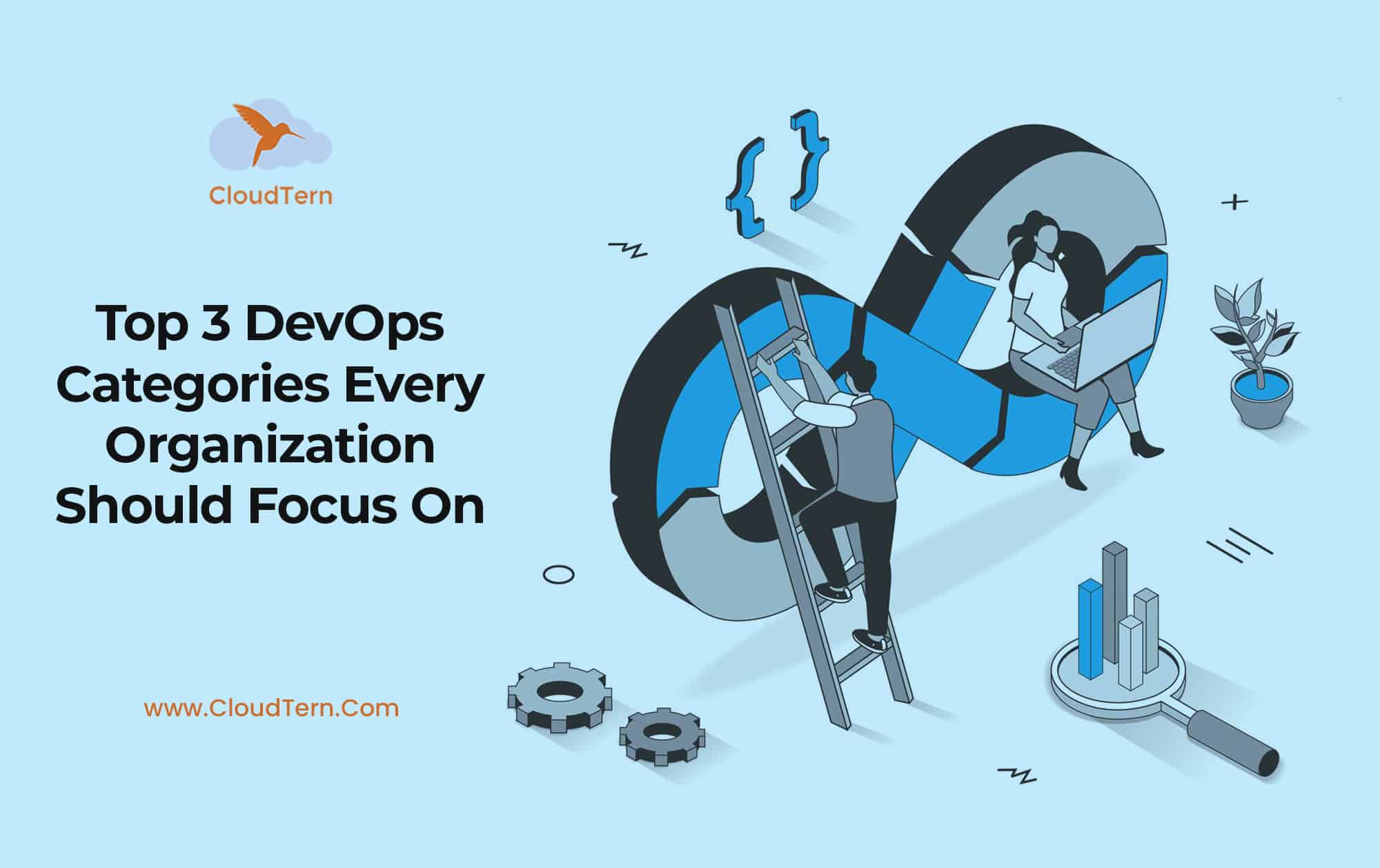
As businesses embrace microservices and cloud-native architectures, DevOps stands at the center, helping businesses efficiently manage IT workloads. DevOps is an innovative methodology that integrates development, operations, security and business teams to seamlessly coordinate and deliver quality products faster and better. From planning and development to delivery and operations, DevOps works right through the entire application lifecycle.
DevOps brings developers and operations together so that the code is automatically build, tested and deployed in a continuous model. It uses a Continuous Integration / Continuous Deployment (CI/CD) pipeline with automation incorporated across the product lifecycle to accelerate the development process and improve efficiencies while reducing costs.
A CI/CD pipeline comprises a series of steps involved in the delivery process of quality software. It includes the following steps:
- Build Phase: The application code is build and compiled here
- Test Phase: The compiled code is tested here
- Release Phase: The code is pushed to the repository
- Deploy Phase: Code is deployed to production
While DevOps offers amazing benefits to IT teams, many organizations fail to leverage it owing to a lack of understanding of this methodology. Understanding different categories of DevOps and implementing the right tool stack is important. Here are 3 important DevOps categories every organization should focus on.
1) Software DevOps
Software DevOps is where the core software is developed. It involves planning the design, assigning tasks to the team and creating artefacts using tools such as coding software, integrated development environment (IDE), version control system, testing framework and issue management.
Integrated Development Environment (IDE): Developers use a text editor to write, debug and edit code. However, an IDE comes with much more features than a text editor offers. Along with an editor, the IDE offers debugging and compilation enabling you to build, test and deploy code from a single dashboard. Choosing the right IDE improves productivity, reduces errors and eases the development process. While choosing an IDE, ensure that it can be integrated with services across the DevOps lifecycle. Visual Studio, IntelliJ and Eclipse are some of the popular IDEs available in the market.
Version Control System: When multiple developers work on a software project, keeping track of code changes becomes a critical requirement. A version control system helps you to keep track of each code change and revert to a specific version when a release crashes. Git is the most popular VCS system. CVS, Mercurial and SVN are other options available in this segment.
Testing Framework: A testing framework offers a set of guidelines to design and run test cases using the best testing tools and practices.
Issue Management: It is a process of identifying system-level conflicts and defects in the workflow based on events or metrics. It involves detection, response, resolution and analysis.
To achieve continuous delivery, it is important to choose the right CI/CD tools and implement automation wherever possible. Here are a few best tools for software DevOps:
Jenkins:
Jenkins is an open-source CI server tool that comes free of cost. It supports Linux, Windows and macOS platforms as well as major programming languages. The main advantage of Jenkins is its plug-in repository. You can find a plugin for most of the development tasks. Moreover, it can be easily integrated with other CI/CD platforms. Debugging is easy. However, it is important to check if the plug-ins are updated. Another downside is the lack of a user-friendly UI. It has a learning curve concerning the installation and configuration of the tool.
Github Actions
Github Actions is a CI/CD platform that enables developers to directly manage workflows in their Github repository. As such, you can perform repository-related tasks in a single place. It offers multiple CI templates. Github Actions comes with 2000 build minutes free per month.
GitLab
GitLab is a CI software developed by GitLab Inc. for managing DevOps environments. It is a web-based repository that enables administrators to perform DevOps tasks such as planning, source code management, operations, monitoring and security while facilitating seamless coordination between various teams through the product lifecycle. This platform was written in Ruby and launched in 2014 as a source code management tool. Within a quick time, it evolved as a platform that covers the entire DevOps product lifecycle. It comes with an open-core license which means the core functionality is open-source and free but additional functionalities come with a proprietary license.
AWS Code Pipeline
AWS CodePipeline is a powerful DevOps product from AWS that enables developers to automate and manage the entire product lifecycle. The tool automatically creates a build, runs the required tests to launch an app whenever a code change is detected. It offers an intuitive GUI dashboard to efficiently monitor and manage workflow configurations within the pipeline. As AWS CodePipeline is tightly integrated with other AWS services such as S3, Lambda or 3rd party services such as Jenkins, it becomes easy to create quality software faster and better. You can simply pull code from S3 and deploy it to Elastic Beanstalk or Codedeploy.
2) Infrastructure DevOps
Infrastructure management is another crucial component of a DevOps environment. With the advent of Infrastructure as Code (IaC), managing the infrastructure became simple, cost-effective and risk-free. Infrastructure as Code is an IT method of provisioning and managing infrastructure resources via config files, treating infrastructure as software. IaC enables administrators and developers to automate resource provisioning instead of manually configuring hardware. Once the hardware is transformed into software, it can be versioned, rollback and reused.
The advent of Ruby on Rails and AWS Elastic Compute Cloud in 2006 enabled businesses to scale cloud resources on-demand. However, the massive growth in web components and frameworks posed severe scalability challenges as administrators struggled to version and manage dynamically changing infrastructure configurations. By treating infrastructure as code, organizations were able to create, deploy and manage infrastructure using the same software tools and best practices. It allowed rapid deployment of applications.
IaC can be implemented using two models namely Declarative Configuration and Imperative configuration. In a declarative approach, the configuration is defined in a declarative model that shows how the infrastructure should be while the Imperative model defines steps to reach the desired state. Terraform and AWS CloudFormation are the two most popular IaC tools that enable organizations to automatically provision infrastructure using code.
Infrastructure as Code took infrastructure management to the next level. Firstly, it rightly fits into the DevOps CI/CD pipeline. The ability to use the same version control system, testing frameworks and other services of the CI/CD pipeline facilitates seamless coordination between various teams and faster time to market while significantly reducing costs. It also helps organizations leverage the containerization technology wherein the underlying infrastructure is abstracted at the OS level, and the hardware and OS are automatically provisioned. As such, containers running on top of it can be seamlessly deployed and moved across a wide variety of environments.
Secondly, IaC offers speed and efficiency with infrastructure automation. It is not confined to compute resources but extends to network, storage, databases and IAM policies as well. The best thing about IaC is that you can automatically terminate resources when they are not in use. Thirdly, IaC reduces operational costs as the number of network and hardware engineers required at every step of operations is reduced. Fourthly, it brings consistency across all deployments as config files use a VCS as a single source of truth. Scalability and availability are improved. Monitoring the performance and identifying issues at a granular level helps reduce downtimes while increasing operational efficiencies. Overall, it improves the efficiency of the entire software development lifecycle.
Terraform
Terraform is an open-source IaC tool developed by Hashicorp in 2014. Written in Go language, Terraform uses Hashicorp Configuration Language (HCL) to define the desired state of the target infrastructure on a variety of platforms including Windows, Solaris, Linux, FreeBSD, macOS and OpenBSD. Terraform is a declarative-based tool that stores the state of the infrastructure using a custom JSON format along with details of which resources should be configured and how. The tool uses ‘Modules’ to abstract infrastructure into sharable and reusable code. HCL is human-readable and helps you quickly build infrastructure code. Terraform is cloud-agnostic and integrates well with AWS. So, it can be used to manage a variety of cloud environments.
AWS CloudFormation
AWS CloudFormation is a managed IaC service from AWS that helps you to create and manage AWS resources using simple text files. Along with JSON template format, YAML is supported. AWS constantly updates the tool to always keep it current while adding several new features regulalry. Nested stacks is a useful feature that encapsulates logical functional areas which makes it easy to manage complex stacks. Similarly, changesets is another useful feature that allows you to inspect changes before applying them. However, CloudFormation is native to AWS. If your infrastructure is AWS-heavy, CloudFormation will serve a great purpose.
3) Database DevOps
DevOps is not just confined to development and operations. Database DevOps extends DevOps capabilities to databases as well, integrating development teams with database administrators (DBAs) such that database code is also included with the software code. As such, database changes can be efficiently monitored and added to the DevOps workflows.
In a traditional development environment, changes made to an application often require changes to be made to the corresponding database. Developers wait for DBAs to make changes to databases that are stored in SQL scripts. These changes have to be reviewed before deploying data to production. As the review is done at the later phase of the workflow, the delay impacts the overall agility and productivity of the project. Errors identified just before a release can be risky and costly as well.
Database DevOps introduces a version control system for database changes. The source control allows you to run builds anytime and roll back if needed at your pace. It also offers an audit trail.
In database DevOps, database workflows are also integrated into the CI/CD pipeline with automation incorporated wherever possible. When a database code change is detected, the system automatically triggers a build. As such, database teams can closely work with other teams on code changes using a well-defined process to improve productivity while reducing task switching.
However, continuous deployment is not easy with regard to databases. When a code change triggers a change to the database schema, it should be migrated to a new structure. You need the right tools to do so. Snowchange is a powerful DevOps database tool that helps you in this regard.
SnowChange
SnowChange is a powerful DevOps database tool developed by James Weakly in 2018 to manage Snowflake objects such as tables, stored procedures and views. Written in Python, Snowchange fits easily into the DevOps CI/CD pipeline as all popular CI/CD tools offer a hosted agent for Python. It is a lightweight tool that follows an imperative approach to DCM (Database migration, schema change and schema migration). It uses a snowchange change script that contains SQL statements defining the state of the database. By looping target databases, the tool applies new changes to the required databases.
Sqitch, Flyway and Liquibase are a few other options in the DevOps database stack.
DevOps is a blanket term that deals with managing an entire product lifecycle. However, it is important to optimize every phase of the DevOps workflow. Choosing the right tool stack for the right process is the key to fully leveraging DevOps.
Confused about various tools, processes and configurations. Not to worry anymore. CloudTern is here to help. As an experienced DevOps company, CloudTern helps you in designing and implementing the right tool stack for your DevOps projects.
Call us right now to master DevOps!
DevOps Predictions for 2022
 DevOps had a dream run in the year 2021 and is sure to continue it into 2022. According to ResearchandMarkets, the global DevOps market was estimated at $4.31 billion in 2020 and $5.11 billion in 2021. This value is expected to touch $12.21 billion in 2026, growing at a CAGR of 18.95% between 2021 and 2026.
DevOps had a dream run in the year 2021 and is sure to continue it into 2022. According to ResearchandMarkets, the global DevOps market was estimated at $4.31 billion in 2020 and $5.11 billion in 2021. This value is expected to touch $12.21 billion in 2026, growing at a CAGR of 18.95% between 2021 and 2026.
DevOps is innovating at a rapid pace. As such, organizations should proactively monitor technology changes and reinvent IT strategies accordingly. Here are the top DevOps predictions for 2022.
1) Distributed Cloud Environments
After hybrid and multi-cloud environments, distributed cloud networks are rapidly gaining popularity in recent times. A distributed cloud environment hosts backend services on different cloud networks in different geolocations while offering a single pane to monitor and manage the entire infrastructure as single cloud deployment. It allows you to customize more-performing and responsive service delivery for specific apps while following regulations of local governments. Distributed clouds bring high resilience, prevent data losses and service disruptions as your apps keep running even when servers in one region crash. It means you gain 99.99% uptime. Edge computing can be considered as an extension to distributed cloud networks.
Distributed clouds offer amazing benefits to all industries. For instance, autonomous vehicles can monitor and process sensor data on-board while sending engine and traffic data to the central cloud. Similarly, OTT platforms can leverage ‘Intelligent Caching’ wherein content in multiple formats is cached at different CDNs while transcoding tasks are done at the central cloud. That way, a newly released popular series can be seamlessly streamed to multiple mobile devices in the same region in real-time.
2) Serverless Architecture
Serverless architecture is a cloud-native architectural pattern that enables organizations to build and run applications without worrying about the provisioning and management of server resources in the infrastructure. The cloud provider takes care of the allocation and management of server and machine resources on-demand. The serverless architecture delivers accelerated innovation as apps can be deployed faster and better. Apps can be decomposed with clear observability as independent services that are event-based. As such, organizations can reduce costs and focus more on delivering better UX.
Serverless computing is rapidly innovating. Function as a Service (FaaS) is a new trend based on the serverless architecture that eliminates the need for complex infrastructure to deploy and execute micro-services apps. Another growing trend is hybrid and multi-cloud deployments that deliver enhanced productivity and are cost-effective. Serverless on Kubernetes is another trend that helps organizations run apps everywhere where Kubernetes runs. Kubernetes simplifies the job of developers and operations teams by delivering matured solutions powered by the serverless model. Serverless IoT is another model that brings high scalability, faster time to market while reducing overhead and operational costs in data-driven environments. It is also changing the way how data is secured in serverless environments.
3) DevSecOps
DevSecOps is a DevOps pattern that converts security into a shared responsibility across the application product lifecycle. Earlier, security was handled by an isolated team at the final stage of product development. However, in today’s DevOps era wherein apps are deployed in smaller cycles, security cannot wait for the end any longer. As such, DevSecOps integrates security and compliance into the CI/CD pipeline, making it everyone’s responsibility. The year 2022 is going to see more focus on shifting security towards the left of the CI/CD pipeline.
DevSecOps increases automation and policy-driven security protocols as QA teams perform automated testing to ensure that non-compliance and security vulnerabilities are efficiently combated across the product lifecycle. The design for failure philosophy is going to be reinvented as well.
4) AIOps and MLOps
Today, regardless of the size and nature, every organization is generating huge volumes of data every day. As such, traditional analytics solutions are inefficient in processing this data in real-time. For this reason, artificial intelligence and machine learning algorithms have become mainstream in recent times.
AI and ML data scientists normally work outside version control systems. Now, CI/CD and automatic infrastructure provisioning are applied to AIOps and MLOps as well. It means you can version your algorithms and identify how changes evolve and affect the environment. In case of an error, you can simply revert to an earlier version.
5) Infrastructure as Code (IaC)
Infrastructure as Code is another growing trend that will become mainstream in 2022. Infrastructure as Code (IaC) is a method of managing the complete IT infrastructure via configuration files. Since cloud-native architecture is becoming increasingly popular in recent times, IaC enables organizations to easily automate provisioning and management of IT resources on a cloud-native architecture by defining the runtime infrastructure in machine-readable files. IaC brings consistency in setup and configuration, enhances productivity, minimizes human errors, and increases operational efficiencies while optimizing costs.
GitOps is the new entrant in this space. Leveraging the IaC pattern and Git version control system, GitOps enables you to easily manage the underlying infrastructure as well as Kubernetes instances. When combined, organizations can build self-service and developer-centric infrastructure that offers speed, consistency and traceability.
Leverage the Communication Revolution with VoLTE-enabled PCRF Systems
 The network evolution is going through two major shifts in recent times. While the voice services are going over IP, networks are moving to the cloud. VoLTE or Voice over LTE has now become mainstream. VoLTE services allow an enterprise to deliver a better customer experience with a modernized voice service. In addition to SMS and voice calls, VoLTE enables you to deliver high-quality video communication while extending calls to multiple devices with seamless collaboration across a wide range of devices such as laptops, tablets, IoT devices, TVs etc. According to Mordor Intelligence, the VoLTE market earned a revenue of $3.7 billion in 2020. This value is expected to touch $133.57 billion growing at a CAGR of 56.57% between 2021 and 2026.
The network evolution is going through two major shifts in recent times. While the voice services are going over IP, networks are moving to the cloud. VoLTE or Voice over LTE has now become mainstream. VoLTE services allow an enterprise to deliver a better customer experience with a modernized voice service. In addition to SMS and voice calls, VoLTE enables you to deliver high-quality video communication while extending calls to multiple devices with seamless collaboration across a wide range of devices such as laptops, tablets, IoT devices, TVs etc. According to Mordor Intelligence, the VoLTE market earned a revenue of $3.7 billion in 2020. This value is expected to touch $133.57 billion growing at a CAGR of 56.57% between 2021 and 2026.
While VoLTE is revolutionizing the communication segment, service providers are not able to fully leverage this technology owing to legacy PCRF systems. Upgrading the PCRF system is the need of the hour.
An Overview of PCRF
Policy Control and Rules Function (PCRF) is a critical component of a Low-Term Evolution (LTE) network that offers a dynamic control policy to charge mobile subscribers on a per-IP flow and per-subscriber flow basis. It brings the capabilities of earlier 3GPP releases while enhancing them to provide QoS authorization for treating different data flows, ensuring that it is in accordance with user subscription profiles.
The need for VoLTE-enabled PCRF
The majority of service providers are battling with legacy PCRFs that struggle to handle the high scalability, performance and reliability requirements of VoLTE services. When organizations see a new business opportunity, they are not able to tap it owing to BSS policy management challenges. They have to either integrate the new policy management with the legacy system or extend the legacy system to support the new policy. Another option is to manage two PCRFs which is more practical and cost-effective. However, separating subscription traffic is the biggest challenge here. This is why many businesses are not able to tap new opportunities but increase customer churn and revenue losses.
Here are some of the reasons why VoLTE-enabled PCRF is the need of the hour.
Differentiated Voice Service and Support
VoLTE services open up new business opportunities for organizations. For instance, service providers can deliver communication services in a tiered model wherein premium services are charged more. At the same time, you can deliver premium calls with higher quality along with dedicated bearer support. Your PCRF should be robust enough to different call sessions and ensure dedicated voice support for premium subscriptions while being able to monitor and manage separate charges.
Alternate Voice Support
When the customer loses LTE coverage, the call should be routed to alternate voice support via a fall-back mechanism using Single Radio Voice Call Continuity (SRVCC) and Circuit Switch Fallback (CSFB) methods. Legacy PCRF systems are not efficient enough to support both these methods.
Regulatory Compliance
Along with quality voice services, the communications service provider should ensure that safety regulatory measures are adhered to and prioritized as well. For instance, when customers make an emergency call, the PCRF should identify the subscriber location and override current subscription plans to offer QoS prioritization. A modern PCRF will help you do so.
Real-time Policy and Charge Management
With a variety of monetization opportunities available for enterprises, policy control along with a real-time subscription monitoring system is the need of the hour. While a VoLTE session is running, businesses can sell another video streaming product or upgrade the subscription for a temporary period. The PCRF should be able to monitor changes in plans in real-time for policy control and charges management.
As the communication segment is going through the VoLTE revolution, it is important for businesses to ensure that the PCRF is VoLTE-enabled. Failing to do so will keep your business out of competition within a quick time.
CloudTern is a leading provider of communications solutions. Contact us right now to transform your legacy PCRF systems into robust VoLTE-enabled PCRF solutions!
Native App Vs Hybrid App – What to Choose?
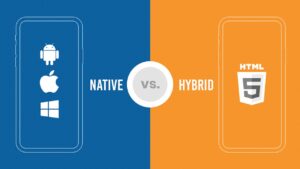 Mobile apps are increasingly being developed in recent times. The reason is simple. There are 4.4 billion mobile users globally as reported by DealSunny. Each hour people make 68 million Google searches generating $3 million revenues, 8 million purchases on Paypal, open 2 billion emails, send 768 million text messages and 1 billion WhatsApp messages. As such, businesses are quickly leveraging this mobile revolution to stay ahead of the competition. Companies build mobile apps to provide a superior customer experience, tap into new markets, engage with customers, boost sales and be competitive.
Mobile apps are increasingly being developed in recent times. The reason is simple. There are 4.4 billion mobile users globally as reported by DealSunny. Each hour people make 68 million Google searches generating $3 million revenues, 8 million purchases on Paypal, open 2 billion emails, send 768 million text messages and 1 billion WhatsApp messages. As such, businesses are quickly leveraging this mobile revolution to stay ahead of the competition. Companies build mobile apps to provide a superior customer experience, tap into new markets, engage with customers, boost sales and be competitive.
One of the important challenges while building a mobile is choosing between native and hybrid app development models. While both app types come with pros and cons, your product goals and business objectives should decide the type of app best suited for your organization. Here is a comparison of two mobile app types.
Native App Vs Hybrid App: Overview
A native app is built for a specific platform and OS and uses a special programming language compatible with the platform. While building a native app, developers use Integrated Development Environment (IDE), SDK, interface elements and development tools related to that platform. For instance, a native app for iOS is written using Objective-C or Swift while a native app for Android devices is written in JavaScript.
A hybrid app is platform-agnostic and OS-agnostic which means you can run it on iOS, Android, Windows and other platforms. Hybrid apps are built using HTML5, CSS, and JavaScript. A hybrid app is actually a web app that is wrapped with a native interface.
Native App Vs Hybrid: Development
Developing native apps takes a long time and is expensive when compared to a hybrid app. To build an iOS app, developers use Swift or Objective-C. Similarly, JavaScript or Kotlin is used to build native Android apps. It gives them full access to the full-featured set and OS functionality. However, developers should have expert knowledge of the programming language to manage OS components. Moreover, you have to write different code bases for iOS and Android platforms.
When it comes to hybrid apps, development is easy as you can use a single code base to run on multiple platforms. The backend is developed using JavaScript, HTML and CSS and the front end comes with a native shell wrapper that is downloaded onto the user machine via a webview. Hybrid apps don’t need a web browser. They can access device hardware and APIs. However, they have to depend on a 3rd party for the native wrapper. Being dependant on frameworks and libraries such as Ionic or Cordova, hybrid apps should always be maintained in perfect sync with platform updates and releases.
Native App Vs Hybrid: Performance
When it comes to performance, Native apps have an edge as they are built specifically for the platform. They are easy to use and deliver faster performance. They seamlessly integrate with the native environment to access tools such as camera, mic, calendar, clock etc. to deliver superior performance. The native platform gives assurance of the quality, security and compatibility with the platform of the native apps. On the other hand, hybrid apps are not built for a specific OS which means they are slow. The speed and performance of a hybrid app depend on the speed of the internet connection of the user’s web browser. It means the performance cannot beat native apps.
Native App Vs Hybrid: User Experience
When it comes to user experience, Native apps deliver a great user experience as they perfectly blend with the branding and interface of the platform. Developers get the luxury of designing an app that fully matches the interface of the platform following specific UI guidelines and standards. They can run offline and online. On the other hand, hybrid apps are not optimized for UI/UX designs as they don’t target a specific OS, platform or group of users.
Native App Vs Hybrid APP: Cost
Building a native app is more expensing compared to a hybrid app as you have to create separate codebases for each platform. For instance, if you create an app for iOS using Swift, it will not work on an Android mobile. It means you have to rewrite the same app using JavaScript or Kotlin that adds up to the initial costs. Moreover, updates and maintenance tasks require additional budgets. Releasing the same features on iOS and Android platforms at the same time is a challenge as releasing cycles and updates are different for both platforms.
Another challenge is that you require diverse skillsets to build and manage multiple versions of the same app. For instance, Swift developers might not have the same level of expertise with Kotlin. You have to hire more developers for the job. All these aspects add up to development time, costs and complexities. Hybrid apps are quick to build and deploy and are cost-effective. Maintenance is easy as well. However, compatibility issues between the device and the OS might creep up in the long run.
Native App Vs Hybrid App: Which one to choose?
Hybrid apps are easy to build and manage while being cost-effective. If you have less time to market, you can quickly build a hybrid app. With customer experience becoming important for businesses in recent times, delivering a superior user experience is always recommended. As such, user experience should be the primary aspect while choosing an app development model. Native apps help you to deliver great UI/UX designs.
Digital Transformation in Healthcare – Everything You Need to Know
The entire business world is going through a digital transformation. While organizations that were encouraged by the benefits offered by digital technologies embarked on this journey first, others were forced to move digital, owing to the pandemic that brought the unexpected lockdown. While the healthcare segment was slow to adopt digital technologies owing to the lack of expertise to decide on where to invest and how to invest, the recent trends reveal that healthcare institutions are now aggressively embracing digital transformation.
What is Digital Transformation in Healthcare?
 Digital transformation in healthcare is about implementing digital technologies to improve healthcare operations, increase patient experience while making healthcare cost-effective and accessible to everywhere, on-demand. Right from online appointments to managing EHRs and medicine reports to integrating various departments for seamless coordination, digital transformation makes healthcare services efficient, easy to use and accessible everywhere.
Digital transformation in healthcare is about implementing digital technologies to improve healthcare operations, increase patient experience while making healthcare cost-effective and accessible to everywhere, on-demand. Right from online appointments to managing EHRs and medicine reports to integrating various departments for seamless coordination, digital transformation makes healthcare services efficient, easy to use and accessible everywhere.
According to Global Market Insights, the global digital healthcare market was valued at $141.8 billion in 2020. This value is expected to grow at a CAGR of 17.4% between 2021 and 2028. Similarly, Grand View Research reports that the global healthcare market earned a revenue of $96.5 billion in 2020 and is expected to grow at a CAGR of 15.1% during the period 2021-2028. These numbers speak volumes of the growing popularity of digital transformation in recent times.
How Digital Transformation Helps Healthcare?
Digital transformation is not a silver bullet that can simply transform existing healthcare institutions. It requires proper planning and implementation. Organizations that have rightly implemented digital technologies are reaping the following benefits:
Centralized Data Management Systems
Gone are the days when patients had to wait in long queues to meet a doctor, undergo tests/scans and return to join the long queues for treatment. With digital technologies incorporated across the organization, patients can now schedule an appointment from the comfort of their homes and get treatment at their convenience. With a single digital ID, doctors can pull out the records of the patient and check out the illness history. Similarly, the diagnostics department staff can retrieve the patient details and update them with the test reports so that the doctor can prescribe the right medicine which is then passed on to the pharmacy wing. With a centralized data management system, concerned people across the healthcare can access the required patient information and deliver quality care. Patient care becomes quick, easy and accessible for everyone.
Patient Portals
A patient portal is an intuitive online healthcare platform that enables patients to access their medical records, communicate with healthcare professionals, receive telemedicine etc. It enables them to access the data from anywhere, any location on-demand and share the test reports and case histories with multiple healthcare providers, gaining better control over the treatment.
Virtual Treatment / Video Call
Today, patients don’t have to visit a healthcare professional for regular sicknesses. Instead, they can contact a medical practitioner via a video call and get their illness treated over the phone. Whether you are in the office, at home or on the road, it is a breeze to search for a healthcare professional and communicate with them on a video call. It is especially useful in rural areas wherein healthcare services are scarce. It means digital transformation extends healthcare to most rural parts of the country. Virtual treatment has helped several patients during the time of Covid. While these options don’t negate direct visitations, they help you in times of health emergencies.
Wearable Technology
Wearable medical devices are on the rise in recent times. With the help of wearable devices, patients can keep track of high-risk conditions and prevent a health upset. For instance, you can monitor heartbeats, sweat, pulse rate, oxygen levels etc. using a wearable device and instantly contact emergency support in case of an emergency. The device can automatically send alerts to your prescribed contacts in case of unusual health metrics. Not only does it prevent a health event but it also saves high medical expenses.
Healthcare / Wellness Apps
Using digital technologies, healthcare professionals can design healthcare or wellness apps that enable patients to track and manage their health from the comfort of their homes. For instance, you can use a wellness app to receive recommendations on food and nutrition. Similarly, you can get mental health counselling from trained and experienced professionals on-demand. There are beauty care apps that can help you to manage your skin for acne, allergy or other issues. Similarly, some apps track your sugar levels, eye health etc.
As healthcare is aggressively moving towards digital transformation, designing the right digital strategy with the right technology stack is the key to fully leveraging this revolution.
Contact CloudTern right now to embark on the digital transformation journey!






